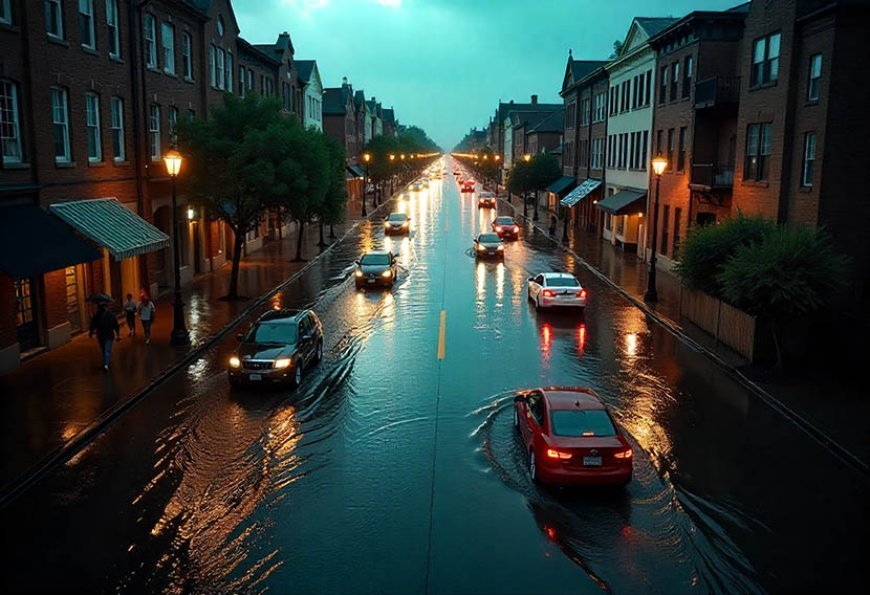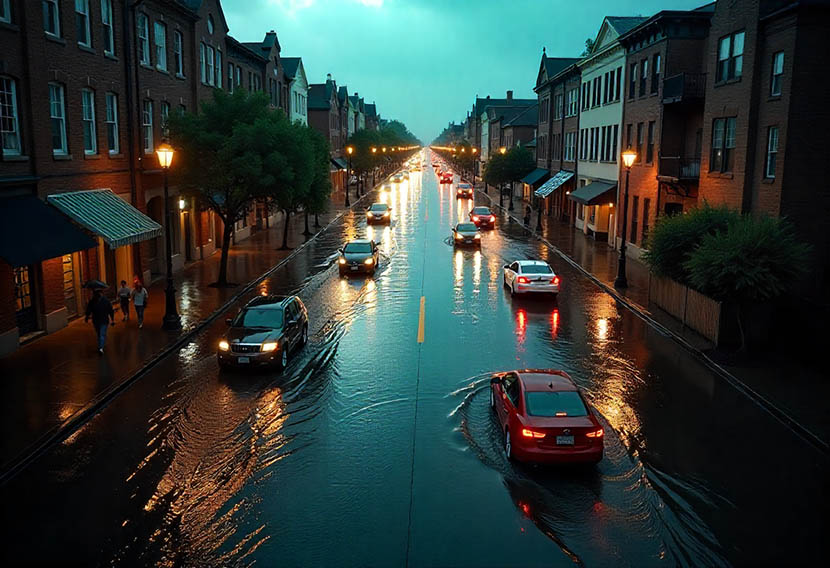Savannah, Jacksonville, Charleston, Charlotte, and Greenville Face New Flash Flood Threat in August Travel Season, Urgent Update for Southeast US Tourists


Savannah, Jacksonville, Charleston, Charlotte, and Greenville are now facing a new flash flood threat this August. The danger is rising fast as torrential rain spreads across the Southeast US. Tourists heading to Savannah, Jacksonville, Charleston, Charlotte, and Greenville during this travel season may experience major disruptions. Roads may flood. Outdoor events may get cancelled. Hotels and local transport may face delays. This is a serious weather update for all Southeast US tourists.
The new flash flood threat is linked to heavy downpours that began at the end of July and are continuing into August. In places like Savannah, Jacksonville, Charleston, Charlotte, and Greenville, the rainfall may reach up to 12 inches in just a few days. These popular Southeast US travel cities are at high risk. The streets in downtown areas could flood. Parks and beach zones could close. Tourists need to stay alert and follow local weather updates.
Moreover, this urgent update warns that the storm system may not clear quickly. Moisture from the Atlantic is flowing into the Southeast US, keeping humidity high. Savannah, Jacksonville, Charleston, Charlotte, and Greenville might experience repeated storms, making the flood threat even worse. Flash floods can hit with little warning and put both visitors and locals in danger.
So, if you’re planning to travel through Savannah, Jacksonville, Charleston, Charlotte, or Greenville this August, take this urgent update seriously. Southeast US tourists must check forecasts, prepare backup plans, and travel safely during this extreme weather phase.
Flash Flood Risk Grows as August Begins in Southeast US
Travelers heading to the southeastern United States this August should prepare for disruption. Flash flooding triggered by days of torrential rain is now a serious danger. From northern Florida to South Carolina, roadways, tourist hubs, and even rural getaways could face unexpected water surges. With rainfall rates as high as 3 inches per hour, the region’s popular summer plans may face chaos. Here’s how the flash flood risk is reshaping the travel outlook in America’s Southeast.
Widespread Rainfall Disrupts Summer Tourism Plans
In early August, intense rainstorms are sweeping across the Southeast. Major tourist zones such as southern Georgia, coastal South Carolina, and parts of northern Florida are being hit. This heavy rain is continuing where July left off. It’s causing deep water on roads, flash floods in valleys, and dangerous driving conditions.
Rainfall rates of 1 to 3 inches per hour overwhelm storm drains. Streets, highways, and even airport access roads may flood. Travel plans for families and solo tourists are now at risk. Areas like Savannah in Georgia are under extra watch. Experts predict that 4 to 8 inches of rain could fall in just a few days.
Key Flooding Zones: From Alabama to Coastal Carolina
The danger zone is wide. It covers northern Florida, southeastern Alabama, southern Georgia, and South Carolina. According to weather models, this area could receive up to 12 inches of rain in isolated spots. Even cities like Charlotte and Greenville in South Carolina are expected to be impacted, though they will get some relief with lower humidity soon.
Travelers using coastal highways or planning beach vacations in South Carolina should stay alert. The heavy rainfall could cut off access routes. Hotel districts and nature parks might close or restrict entry.
Local Cooling Won’t Stop the Flood Risk
Although some places like Charlotte and Atlanta may cool off, the relief is short-lived. Cooler and drier air from the Northeast will push in, but not for long. This wedge of air may help cities feel less humid. Yet, Florida and coastal areas will remain hot and wet.
Temperatures in central and southern Florida will stay in the 90s. Tampa, for example, saw 100-degree days recently. While those exact highs may not return, the heat combined with storms will continue to fuel risky weather. Travelers heading to beaches or theme parks should plan for delays and potential evacuations.
New Tropical Storm Dexter Adds to the Worry
Adding to the concern is Tropical Storm Dexter. It formed along the same weather front affecting the southern Atlantic coast. While it is expected to move northeast and stay over the ocean, it serves as a sign. The region’s weather is ripe for more tropical activity.
Experts say two more tropical systems could form soon. These could bring more rain and wind to the already soaked southeastern states. The flash flood threat could rise even more if these systems move inland. Tourists should monitor updates daily and adjust plans accordingly.
Travel Infrastructure Faces Strain
The stormy conditions are also affecting travel infrastructure. Flooded highways make bus tours and car rentals unsafe. Delays are expected at small regional airports in Georgia and South Carolina. Cruise terminals near Jacksonville and Charleston could see disruption if storms persist.
Tour operators and travel agents report higher cancellation and rebooking rates. Insurance claims for weather-related delays are also rising. Tourism boards are warning visitors to stay informed and flexible. Checking weather alerts before departure is now essential.
Rural Tourism and Outdoor Plans Hit Hard
Tourism isn’t just about cities. Rural getaways in Georgia and South Carolina are popular in summer. Hiking trails, camping zones, and river rafting spots now face closures. Torrents of water can turn creeks into dangerous flood zones quickly.
In Appalachia and parts of inland Alabama, waterfalls and rivers may surge. Washouts can destroy trails or isolate campsites. Forest roads may close with little warning. This poses safety risks to backpackers and campers unfamiliar with sudden flood behavior.
Flash Flood Forecast: What’s Ahead This Week?
Weather experts say the stormy pattern will continue through the first week of August. A general 2-4 inches of rain will fall across much of the region. Localized totals may be much higher. Travelers to Southeast USA this week should expect flash flood warnings in real-time.
Even as the air briefly dries out in parts of the interior, humidity and moisture will bounce back. The southeastern breeze from the Atlantic brings in tropical air. This rebound means more downpours are likely later in the week and beyond.
Travel Safety Tips During Flash Flood Threat
Visitors can still enjoy the Southeast with care. Travel experts urge tourists to check AccuWeather daily. Premium alerts help travelers stay ahead of sudden weather changes. Hotels and resorts in high-risk areas now issue regular updates. Tourists should follow all local advisories.
For road travelers, it’s critical to avoid driving through floodwaters. “Turn around, don’t drown” remains the top advice. Flights may still run, but delays are likely. It’s wise to book flexible travel or add weather insurance.
August Travel Faces Weather Roadblocks
This August, Southeast USA travel comes with a flash flood warning. From beach towns to mountain retreats, tourists face a stormy season. Tropical rains, persistent downpours, and rising heat form a dangerous mix. The flash flood risk changes how families, solo explorers, and groups plan their trips.
Travelers should stay alert and informed. With proper planning, they can avoid the worst impacts. But one thing is clear: the stormy summer isn’t over yet. August will test the resilience of tourism in the Southeast.
The post Savannah, Jacksonville, Charleston, Charlotte, and Greenville Face New Flash Flood Threat in August Travel Season, Urgent Update for Southeast US Tourists appeared first on Travel And Tour World.






